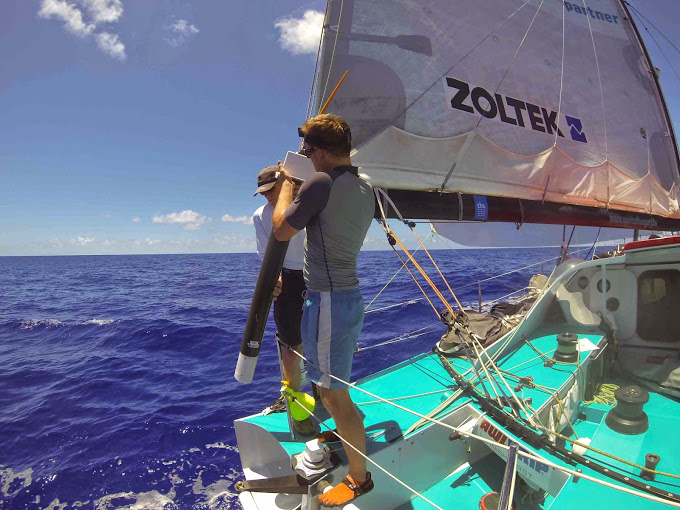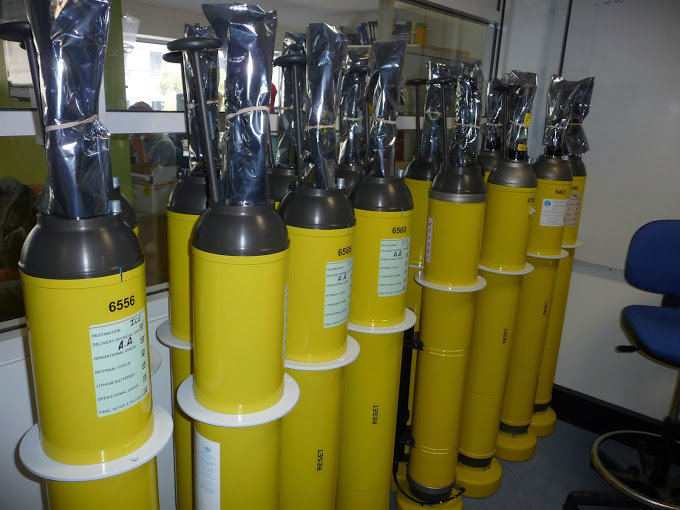A network of floating data monitors across the world’s oceans has revealed a noticeable rise in temperature, particularly around Northern Australia, in as little as eight years – something that usually takes a lot longer to be recorded.
The global Argo array is a network of 3750 floats, jointly funded by the US National Ocean and Atmospheric Administration, Australia’s Integrated Marine Observing System, the National Institute of Water and Atmospheric Research in New Zealand, and other international agencies. It enables scientists to observe the basic physical state of all world oceans simultaneously.

So what have they found? A report in Nature Climate Change, ‘Unabated planetary warming and its ocean structure since 2006’ reveals the results.
The top 2000m of the world’s oceans warmed at a rate of 0.4 to 0.6 watts per square metre (W/m 2) between 2006 and 2013. The translates to a warming of roughly 0.005°C a year in the top 500m metres of ocean and 0.002°C a year at depths between 500 and 2000m. This doesn’t sound like much, but expressed in everyday terms, it’s equivalent of adding the heat of two trillion continuously burning 100-watt light bulbs to the world’s oceans.
Lead study author, Dean Roemmich, said the rate of ocean heat gain is not unusual.
“What is new is that the rate and patterns of ocean heat gain are revealed over a period as short as eight years, thanks to the Argo array, that the warming signal is shown to extend to 2000m and deeper, and that it is occurring predominantly in the Southern Hemisphere ocean south of 20°S’. Northern Australia is at this latitude.”
He says the study puts a widely reported ‘hiatus’ in global surface air temperatures since 1998 into context. It illustrates that the pause in warming of the sea surface and the lower atmosphere is not representative of the steady, continuing heat gain by the climate system. Scientists measure that heat gain in terms of increasing temperature averaged over the water column. What appears to be happening is a separation into upper layers with high variability over the years, and large uncertainty in the trend, and deeper steadier warming with lower uncertainty.

Co-author Susan Wijffels from CSIRO explains, “When we measure globally and deep enough, we see a steady rise in the earth’s heat content, consistent with the expected greenhouse gas-driven imbalance in our planet’s radiation budget”.
The data come from battery-powered autonomous floats that spend most of their life drifting at depth. In a nifty bit of engineering, they remain stable because they are neutrally buoyant at the ‘parking depth’ pressure. Most floats descend to a target depth of 1000m to drift, then drop to 2000m to start the temperature and salinity profile. At regular intervals – usually 10 days – the floats rise to the surface, over about six hours, taking about 200 pressure, temperature, and salinity measurements as they go. Satellites or GPS determine the floats’ positions when they surface, and the floats transmit their data to the satellites. The floats then sink to drift again until the cycle is repeated.
Previously, scientists had to rely on ships for periodic readings to inform opinion about temperatures and conditions in our seas. The equipment available meant readings could only be taken at 700m or less. Now the organisations behind the Argo technologies are looking to develop a new generation of deep ocean floats that can record fundamental data at depths of as much as 6000m.
“The ability to consistently detect a global ocean heat gain of 0.4 to 0.6 W/m² over this short period is historically unprecedented”, the researchers note in their report.
“Homogeneous global coverage, high data quality and temporal resolution of seasonal and interannual fluctuations are key attributes for enabling the Argo-only analyses that underpin this result.”
All Argo data is available online and free to use.
